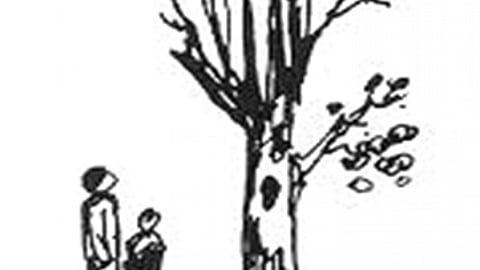
- Topics
- Feature
- Opportunities & Events
- About
- Hindi Portal
- Data
- Topics
- Feature
- Opportunities & Events
- About
- Hindi Portal
- Data

The pavement burns the skin of my soles through my thick shoes, and the merciless sun blazes through my sunglasses making me squint in the blinding light. I look around for some shade but the tiny umbrella in my bag, my only saviour, proves useless. Delhi’s tree-lined streets are barren, the beautiful green shady canopies scarce .
The heat saps my energy and sometimes even my will to live as the temperature soars slowly and steadily. I wonder how the trees must feel…how they survive in this scorched land. The short spell of the monsoons, the noxious polluted air, the crowded space and the overwhelming march of the cemented pavement – that’s what the trees of Delhi are exposed to these days but the Delhi of yesteryears was quite different.